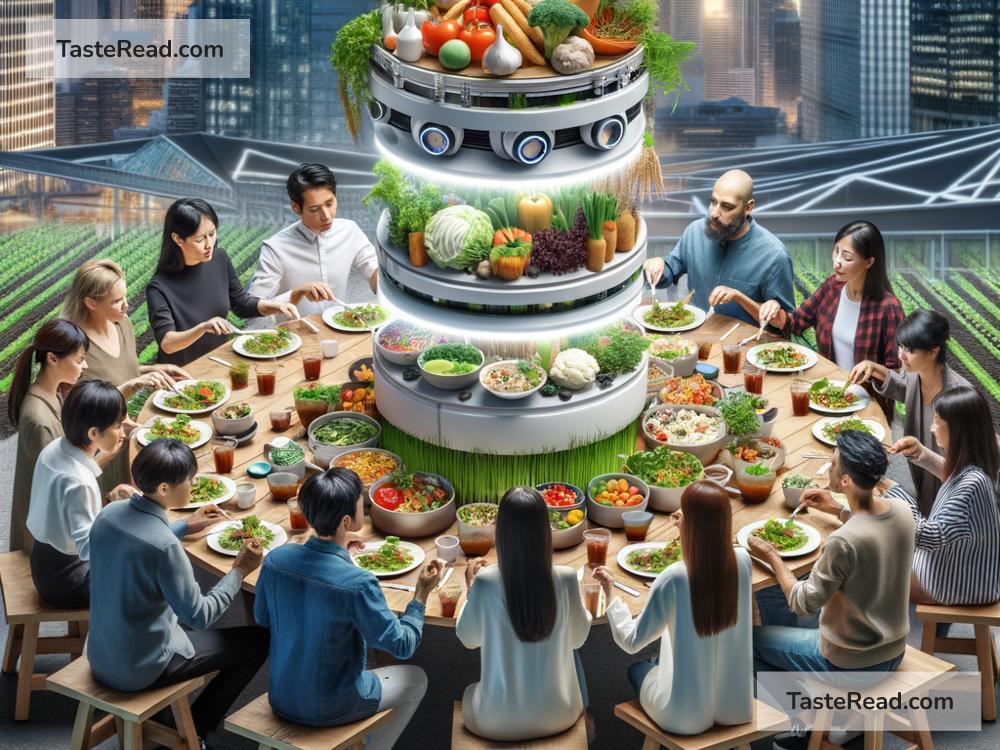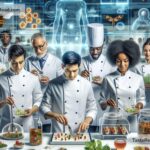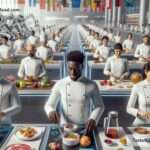The Future of Food: Building Inclusive Global Models
The way we eat today is changing quickly. With growing populations, climate change, and technology shaping the world, the future of food is one of the most important topics that humanity needs to address. Food isn’t just a daily need; it’s a matter of survival, culture, and connection. As we look ahead, finding ways to feed everyone sustainably and fairly must involve inclusive global models—systems that take into account every person’s needs and contributions, no matter where they live.
Why Food Systems Need to Change
Our current food systems face big challenges. Globally, millions of people still go hungry every day, while others deal with health problems linked to overeating or unhealthy diets. At the same time, farming and food production can harm the planet. Agriculture accounts for nearly 25% of greenhouse gas emissions, contributes to deforestation, and depletes freshwater resources. In some regions, poor farming practices damage soil, making it hard to grow food in the future.
Climate change adds another layer of complexity. Rising temperatures, unpredictable weather, and growing water scarcity are already affecting crops around the world. For example, droughts in Africa and floods in Southeast Asia disrupt food production. These challenges will only intensify over time. Unless food systems adapt, the mismatch between available food and global demand will grow.
Innovations in Food Production
The future of food involves rethinking how we grow, process, and distribute food. Scientists, farmers, and innovators are exploring new ways to make food systems more efficient, environmentally friendly, and resilient.
One promising area is alternative proteins. Foods like lab-grown meat, plant-based meat, and insect protein are gaining popularity as sustainable substitutes for traditional livestock farming. These options use fewer resources, generate less pollution, and reduce the need for large-scale animal agriculture.
Another innovation is vertical farming. Instead of growing crops in open fields, vertical farms grow food indoors in stacked layers. Controlled environments use less water, fertilizers, and pesticides, while producing fresh crops year-round. This type of farming is especially useful in cities where space is limited.
Genetic engineering, like creating drought-resistant crops, could also be a game-changer. Scientists are using technology to create plants that can thrive in tough conditions, ensuring that food remains available even as the planet’s climate changes.
But technology alone isn’t enough. For these solutions to truly work, they need to reach everyone—including farmers in developing countries who often lack access to advanced tools or training. That’s where inclusive global models come in.
What Are Inclusive Global Models?
Inclusive global models aim to create food systems that work for everyone, regardless of their economic status, geographic location, or social background. These models focus on fairness, collaboration, and sustainability. The idea is that no one should be left behind—whether it’s the farmer growing crops, the family buying groceries, or the businesses selling food.
Here are some key elements of inclusive global models:
-
Empowering Small Farmers: A large share of the world’s food comes from small-scale farmers, especially in less-developed countries. These farmers need better access to resources like seeds, tools, credit, and knowledge. Governments, organizations, and private sectors can help by investing in training programs, creating cooperatives, and ensuring fair prices for crops. When these farmers thrive, food production becomes more reliable and diverse.
-
Reducing Food Waste: An incredible amount of food—about one-third of all produced globally—is wasted every year. Inclusive models prioritize efficient food handling, storage, and distribution to ensure that food reaches people instead of going to waste. Technologies like smart packaging, improved refrigeration, and apps to connect surplus food to those in need can play a big role.
-
Local and Global Collaboration: Food systems need cooperation between countries, communities, and industries. For example, wealthier nations can fund farming innovations in poorer regions. Local governments can encourage community farms and markets that promote local produce. Partnerships between researchers, businesses, and farmers can spread valuable knowledge more quickly.
-
Promoting Healthy Diets for All: Affordable, nutritious food must become a priority. This means investing in education programs that teach families about healthy eating, as well as making fruits, vegetables, and other wholesome foods much cheaper for everyone. Inclusivity goes beyond access to food—it’s also about making sure the food supports long-term health.
-
Sustainable Practices: Inclusive models prioritize protecting the environment while meeting human needs. Practices like regenerative farming, agroforestry, and precision agriculture help restore ecosystems, reduce waste, and lower emissions. When food systems are sustainable, they work better for everyone in the long run.
Technology, People, and Policies Working Together
The future of food relies heavily on the intersection of technology, people, and policies. Technology will help us produce smarter solutions like drones monitoring farms or apps connecting farmers to markets. People—from farmers and workers to consumers—must embrace sustainable habits and demand more fairness in food systems. Governments and organizations need to adopt policies that encourage sustainability, inclusivity, and innovation.
For example, policies could incentivize farmers to adopt eco-friendly practices or give subsidies to companies creating low-cost, nutritious foods. International cooperation among policymakers can address problems like trade imbalances and global hunger. Together, these forces shape a future where food systems work for everyone.
A Shared Responsibility
Feeding the world in the years to come is a shared responsibility. Everyone has a part to play—from choosing sustainable products at the store to reducing food waste at home. Business leaders, farmers, scientists, and governments also need to step up and collaborate.
The road ahead is challenging, but the potential for progress is immense. With new ideas, inclusive models, and global teamwork, the future of food can be sustainable, healthy, and fair. Every bite we take reminds us that food is life—and building a better system for it sustains not just us, but the planet.


